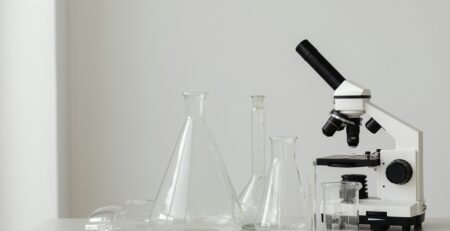4
Sep
Pycnometers: Measuring Liquid Density with Laboratory Accuracy
Pycnometers are precision instruments designed to measure the density of liquids with exceptional accuracy. Made from borosilicate glass (BORO 3.3), they are widely used in research, industry, and education for determining liquid properties under controlled conditions. In Australian laboratories, pycnometers are essential for analytical chemistry, quality control, and teaching fundamental physical chemistry principles.
How Pycnometers Work
A pycnometer is a small, calibrated glass flask with a tight-fitting stopper, often fitted with a capillary hole.
- The known volume of the flask allows accurate mass–volume calculations.
- Liquid density is determined by weighing the pycnometer when empty, filled with liquid, and sometimes filled with water for calibration.
- Results are highly reproducible, making pycnometers superior to many other density-measurement methods.
Advantages of Borosilicate Glass Construction
BORO 3.3 glass ensures pycnometers meet international accuracy standards:
- High thermal resistance for stable measurements.
- Excellent chemical durability, suitable for acids, solvents, and aqueous solutions.
- Dimensional stability over repeated use and cleaning.
- Clarity for easy visual inspection of fill levels.
Applications in Laboratories
- Analytical chemistry: Determining the density of reagents and solutions.
- Pharmaceutical industry: Quality control of liquid formulations.
- Petrochemical testing: Measurement of oils, fuels, and solvents.
- Education: Teaching density concepts and fluid properties in chemistry courses.
Comparison Table: Pycnometers vs Hydrometers
| Feature | Pycnometer | Hydrometer |
|---|---|---|
| Accuracy | Very high, reproducible measurements | Moderate, depends on float calibration |
| Sample Volume | Small, controlled | Larger, requires more liquid |
| Calibration | Individually calibrated with stoppers | Pre-calibrated instrument |
| Best Applications | Analytical labs, QC, research | Rapid approximate density checks |
| Material | BORO 3.3 Borosilicate Glass | Glass or plastic |
FAQs
Q1: Why use a pycnometer instead of a hydrometer?
Pycnometers provide far greater accuracy and reproducibility, making them the preferred choice for critical measurements.
Q2: Are pycnometers available in different volumes?
Yes, common capacities range from 10 mL to 100 mL, chosen depending on the type of liquid and application.
Q3: How should pycnometers be cleaned?
Use suitable detergents or solvents, followed by rinsing with distilled water. Ensure the capillary stopper is completely clean and dry before reuse.
Q4: Can pycnometers be used for volatile liquids?
Yes, but handling must be done carefully to prevent evaporation losses. Specialised stoppers can improve accuracy with volatile samples.
References
- ISO 3507: Laboratory Glassware — Pycnometers.
- ASTM D854: Standard Test Method for Specific Gravity of Liquids Using Pycnometers.
- ISO 3585: Borosilicate Glass 3.3 — Properties and Applications.
- University of Melbourne Physical Chemistry Laboratory Manual.
- NIST Chemistry WebBook, National Institute of Standards and Technology.

